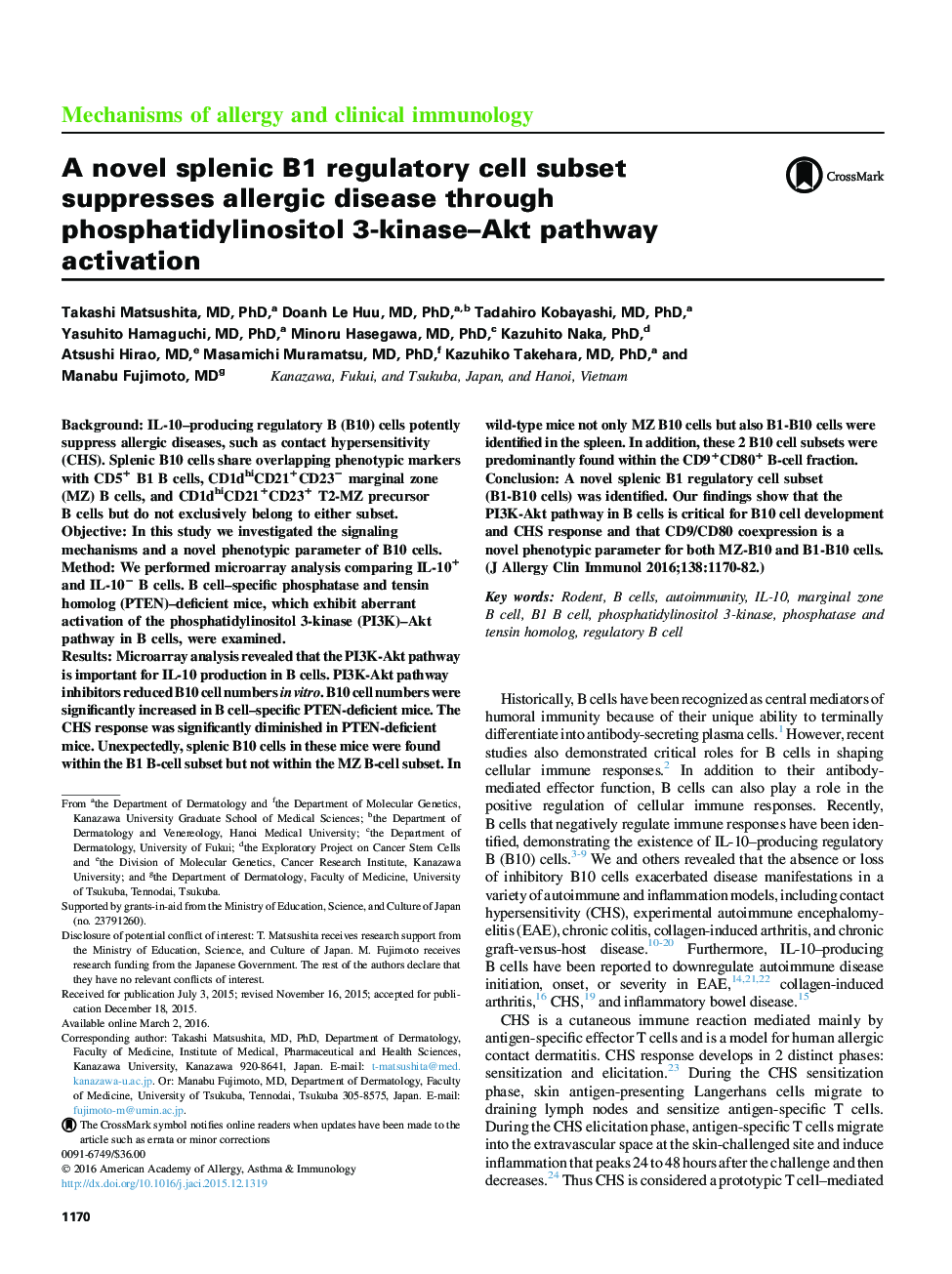| Article ID | Journal | Published Year | Pages | File Type |
|---|---|---|---|---|
| 5646673 | Journal of Allergy and Clinical Immunology | 2016 | 22 Pages |
BackgroundIL-10-producing regulatory B (B10) cells potently suppress allergic diseases, such as contact hypersensitivity (CHS). Splenic B10 cells share overlapping phenotypic markers with CD5+ B1 B cells, CD1dhiCD21+CD23â marginal zone (MZ) B cells, and CD1dhiCD21+CD23+ T2-MZ precursor B cells but do not exclusively belong to either subset.ObjectiveIn this study we investigated the signaling mechanisms and a novel phenotypic parameter of B10 cells.MethodWe performed microarray analysis comparing IL-10+ and IL-10â B cells. B cell-specific phosphatase and tensin homolog (PTEN)-deficient mice, which exhibit aberrant activation of the phosphatidylinositol 3-kinase (PI3K)-Akt pathway in B cells, were examined.ResultsMicroarray analysis revealed that the PI3K-Akt pathway is important for IL-10 production in B cells. PI3K-Akt pathway inhibitors reduced B10 cell numbers in vitro. B10 cell numbers were significantly increased in B cell-specific PTEN-deficient mice. The CHS response was significantly diminished in PTEN-deficient mice. Unexpectedly, splenic B10 cells in these mice were found within the B1 B-cell subset but not within the MZ B-cell subset. In wild-type mice not only MZ B10 cells but also B1-B10 cells were identified in the spleen. In addition, these 2 B10 cell subsets were predominantly found within the CD9+CD80+ B-cell fraction.ConclusionA novel splenic B1 regulatory cell subset (B1-B10 cells) was identified. Our findings show that the PI3K-Akt pathway in B cells is critical for B10 cell development and CHS response and that CD9/CD80 coexpression is a novel phenotypic parameter for both MZ-B10 and B1-B10 cells.
